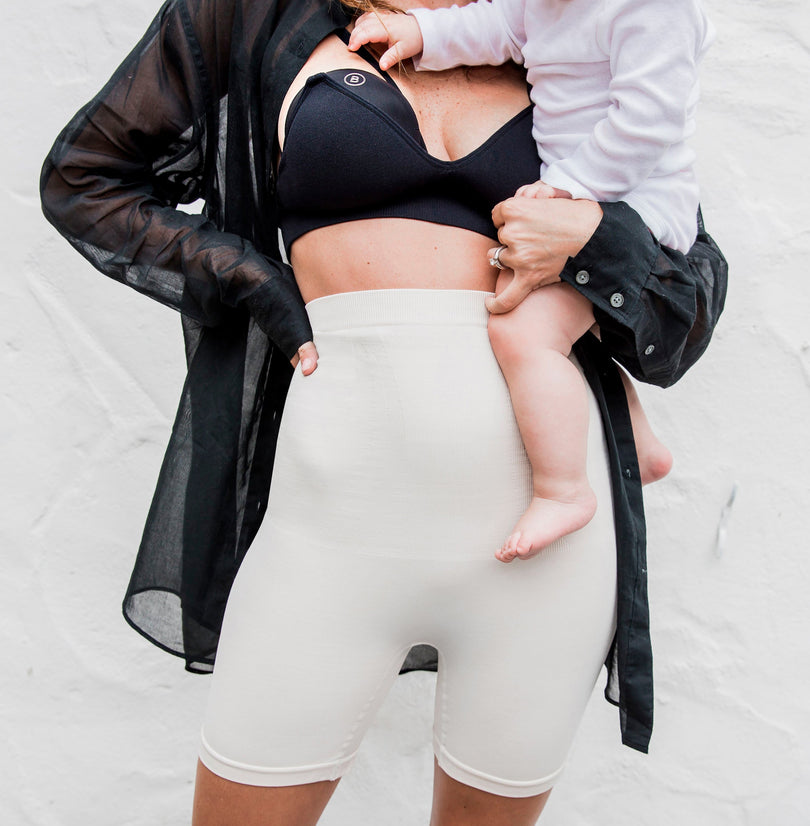You may remember Katelyn Thompson of Sweet Pea Sleep Solutions, a Certified Pediatric Sleep Consultant, from this post. She’s passionate about helping other parents get the sleep they and their children need while being gentle and responsive and keeping the parent-child bond secure. She's back sharing how to cure your Daylight Savings hangover - because we're all still adjusting, right?!
Ahh, Daylight Savings… a day mourned by parents everywhere for wreaking havoc on their childrens’ finally-perfected sleep schedules. How can a one hour change cause so much distress? This past Sunday when we set the clocks an hour back, and 7pm became 6pm, parents were faced with a frustrating choice. Put your children to bed crazy early to keep them from getting cranky, or rip the Band Aid off and try to adjust your children to the new schedule while risking overtiredness. When children get overtired, they have a harder time falling asleep, their sleep quality tends to be poorer, and it can even lead to wake ups during the night. However, bedtime tends to be the easier part of this equation to handle. Even if you start 2 weeks before Daylight Savings with the perfect plan incrementally moving their bedtime up 5 minutes per day, their internal clock for their morning wake up is often what is hard to budge. This means that your child who once slept 11 hours per night and woke at 6:30am is now sleeping 10 hours per night and waking at the ungodly time of 5:30am. Luckily, there are a couple things you can do to help ease your family back into their happy sleep habits! Although there is no one night magical fix, these are two tools you should use to beat overtiredness and lengthen morning wake ups.
How are you all getting into the swing of things with Daylight Savings? We are taking these tips to heart and working with our BLANQI babies currently to get things smooth again with bedtime and wake up time. Thanks so much Katelyn! Stay tuned for the next post coming up for how to successfully navigate another sleep speed bump coming up- the holidays!
Ahh, Daylight Savings… a day mourned by parents everywhere for wreaking havoc on their childrens’ finally-perfected sleep schedules. How can a one hour change cause so much distress? This past Sunday when we set the clocks an hour back, and 7pm became 6pm, parents were faced with a frustrating choice. Put your children to bed crazy early to keep them from getting cranky, or rip the Band Aid off and try to adjust your children to the new schedule while risking overtiredness. When children get overtired, they have a harder time falling asleep, their sleep quality tends to be poorer, and it can even lead to wake ups during the night. However, bedtime tends to be the easier part of this equation to handle. Even if you start 2 weeks before Daylight Savings with the perfect plan incrementally moving their bedtime up 5 minutes per day, their internal clock for their morning wake up is often what is hard to budge. This means that your child who once slept 11 hours per night and woke at 6:30am is now sleeping 10 hours per night and waking at the ungodly time of 5:30am. Luckily, there are a couple things you can do to help ease your family back into their happy sleep habits! Although there is no one night magical fix, these are two tools you should use to beat overtiredness and lengthen morning wake ups.
Don’t be afraid of early bedtime.
If your child’s bedtime before Daylight Savings was 7:30pm, it may seem impossible to get them down at 6:30pm now (and you eventually want them to get back on the same schedule, of course!) However, don’t be afraid to allow some flexibility over the next week or two. Putting your child down at 6:45 or 7:00pm is totally acceptable as you make this transition, and very gradually try to stretch that time until you make it back to 7:30pm. For babies, once you see the yawns and eye rubbing, try to get them down within 15 minutes so you don’t miss their sleep window!Harness the power of circadian rhythm.
Circadian rhythm is a fancy word for your “body clock.” It runs off of hormones and environmental factors (like light) to tell your body when it’s time to get sleepy, and when it’s time to be awake. In order to reset your child’s circadian rhythm to a later wake time in the morning, you should keep the first hour of the morning as calm, dark and quiet as possible. If you have a child who happily plays and babbles in their crib or bed when they wake up, leave them in there for as long as they are happy. If not, get your child up but keep the lights low, TV off, and delay feeding if possible. Once you hit your child’s desired wake time, turn on all the lights, music, have breakfast and proceed as normal with your day. With consistency, you should begin to see this work on their circadian rhythm play out in a lengthening of their sleep and a later wake time.How are you all getting into the swing of things with Daylight Savings? We are taking these tips to heart and working with our BLANQI babies currently to get things smooth again with bedtime and wake up time. Thanks so much Katelyn! Stay tuned for the next post coming up for how to successfully navigate another sleep speed bump coming up- the holidays!




